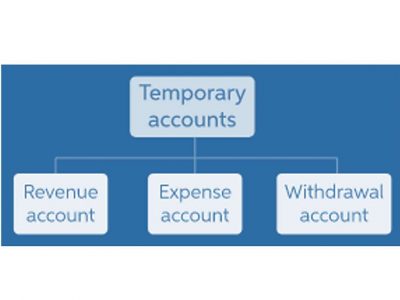
Optimizing WIP ensures that machines, labor, and materials are all being used efficiently. For a computer manufacturer, this would include the cost of components, assembly labor, and overhead costs like electricity for the production facility. Businesses can monitor and control manufacturing costs by setting up a robust cost tracking system, conducting regular budget vs. actual cost analyses, and identifying areas for improvement. An electronics manufacturer might routinely review material waste and implement measures to reduce it, leading to ongoing cost control. By accurately calculating this cost, manufacturers can better price their products, optimize production, and improve operational efficiency.
Add Direct Materials, Direct Labor, And Allocated Overhead
This includes all materials that can be traced directly to the finished product. For example, in car manufacturing, steel, tires, and glass are direct materials. To calculate total manufacturing costs, you must first sum up all the direct materials used in production. Small businesses can accurately calculate total production costs by summing up all direct costs (raw materials, labor) and indirect costs (overhead expenses). For example, a bakery calculating the cost of producing a cake would include flour, sugar, baker’s wages, and a portion of rent and utility bills for the production area. To calculate total manufacturing cost, add your direct material costs to the sum of your direct labour costs and manufacturing overhead.
What are total manufacturing costs the sum of?

It can be used to help you simplify, plan, budget, automate and accurately report on your operations. Put simply, ERP software allows you to reduce the use of unnecessary resources without sacrificing quality. This category covers all expenses which are needed to implement the production processes but cannot be physically identified with a specific unit of output. Overheads directly impact a business’ balance sheet and income statement so it’s important to track and allocate these expenses. Cost of goods sold (COGS) is the direct cost of producing goods, excluding overhead costs.

What is the difference between direct and indirect manufacturing costs?

Manual tracking of manufacturing progress is prone to introducing delays and errors in production. A modern production intelligence platform that enables real-time scheduling, predictive workload balancing, and enhanced visibility is essential for optimal WIP management. Others make the opposite mistake, assuming that WIP should be entirely eliminated. While systems such as lean manufacturing focus on reducing inventory, some WIP is necessary to prevent bottlenecks and to maintain high machine utilization across production from start to finish. The key is to maintain a balanced flow that avoids both accumulation and shortages.
How Can an ERP System Help Organizations Manage their Total Manufacturing Costs?
Taking the right approach to WIP manufacturing is essential to maintaining production efficiency, reducing costs, and ensuring on-time delivery. Putting this into action requires real-time visibility into ongoing production and inventory to avoid bottlenecks, excess inventory, and scheduling delays. This flexibility allows your team to respond more quickly to market demands, thanks to reduced inventory and lead times. In addition, quality control improves as defects are easier to catch when there are fewer unfinished goods in the pipeline, ensuring higher product quality and customer satisfaction. Well-balanced WIP ensures that manufacturers avoid slowdowns due to material shortages while also preventing excessive buildup that requires additional storage.
- Analyzing labor efficiency through performance metrics can provide insights into optimizing labor costs without compromising quality.
- It helps calculate the cost of goods manufactured (COGM) and, subsequently, the cost of goods sold (COGS).
- After all, the accuracy of your TMC calculation depends on the precision of the data you gather.
- Manufacturing overhead does not include costs unrelated to the manufacturing process like administration wages, sales and marketing expenses, office rent, etc.
- If you conclude that costs are as low as possible, but revenue is still struggling, the next step could be to alter your pricing.
- Unlike untouched raw material inventory and completed goods, which are ready for sale, WIP is locked down until completion.
This understanding is not just beneficial for internal accounting but also plays a vital role in pricing strategies and competitive positioning in the market. It represents a comprehensive view of all expenses involved in the production cycle. Understanding this formula allows manufacturers to establish pricing, analyze profitability, and develop strategic plans for growth. By consistently applying this formula, businesses can maintain a healthy financial standing and make informed decisions. Regarding indirect labour costs, these are wages paid to employees who weren’t physically involved in manufacturing but still played some part in the process.
- Lastly, add all the indirect manufacturing costs like depreciation on equipment, rent, or utilities.
- For example, a bakery calculating the cost of producing a cake would include flour, sugar, baker’s wages, and a portion of rent and utility bills for the production area.
- Real-time updates and proactive scheduling let teams make informed decisions each shift, reducing lead times and costly inventory buildup to optimize WIP.
- Direct labor refers to the wages, benefits, and payroll taxes paid to employees directly involved in the manufacturing process.
- Essentially, it represents the total cost of producing the goods that will be sold to customers.
The Role of Automation in Managing WIP
The concept of total manufacturing cost has been a cornerstone in industrial and manufacturing economics for centuries. It evolved with the industrial revolution as businesses sought to understand and reduce the costs of production to increase competitiveness Food Truck Accounting and profitability. Along with many other manufacturing accounting metrics, total manufacturing costs can easily be tracked in an MRP/ERP system.
Key Aspects of Direct Labor
You can calculate your total manufacturing cost by balance sheet adding the total cost of direct materials, direct labor, and manufacturing overhead. However, before using the total manufacturing cost formula to calculate your costs, you need to understand what each part of the formula means. The main components of total manufacturing cost are direct materials, direct labor, and manufacturing overhead. Direct materials include all raw materials and components that become a part of the finished product.

What is manufacturing overhead?

Changing production total manufacturing cost formula methods to better utilise raw materials is another way manufacturer can reduce direct material waste. Understanding total manufacturing costs is an important step for those who want to improve manufacturing productivity. Efficient supply chain management plays a crucial role in controlling manufacturing costs.
